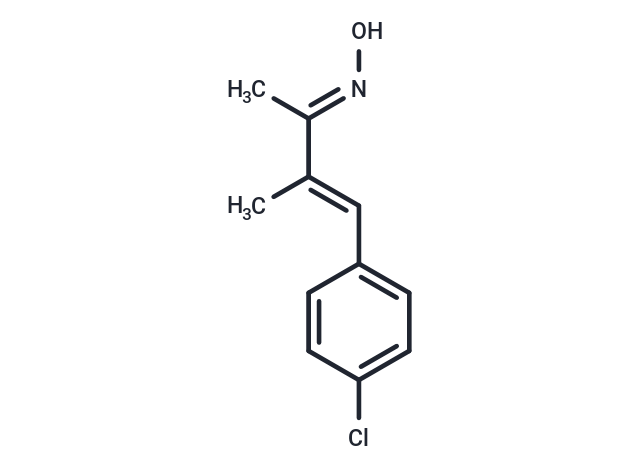Shopping Cart
- Remove All
 Your shopping cart is currently empty
Your shopping cart is currently empty

AP-18 is a potent and selective TRPA1 inhibitor. AP-18 inhibits activation of TRPA1 induced by 50 μM Cinnamaldehyde with an IC50 of 3.1 μM and 4.5 μM for human and mouse TRPA1, respectively. AP-18 could reverse complete Freund's adjuvant (CFA)-induced mechanical hyperalgesia in mice. AP-18 could attenuate Yo-Pro uptake induced by 30 μM AITC in a concentration-dependent manner (IC50= 10.3 μM).

| Pack Size | Price | Availability | Quantity |
|---|---|---|---|
| 2 mg | $30 | In Stock | |
| 5 mg | $43 | In Stock | |
| 10 mg | $67 | In Stock | |
| 25 mg | $143 | In Stock | |
| 50 mg | $226 | In Stock | |
| 100 mg | $355 | In Stock | |
| 500 mg | $762 | In Stock | |
| 1 mL x 10 mM (in DMSO) | $43 | In Stock |
| Description | AP-18 is a potent and selective TRPA1 inhibitor. AP-18 inhibits activation of TRPA1 induced by 50 μM Cinnamaldehyde with an IC50 of 3.1 μM and 4.5 μM for human and mouse TRPA1, respectively. AP-18 could reverse complete Freund's adjuvant (CFA)-induced mechanical hyperalgesia in mice. AP-18 could attenuate Yo-Pro uptake induced by 30 μM AITC in a concentration-dependent manner (IC50= 10.3 μM). |
| In vitro | At concentrations up to 50 μM, AP-18 does not significantly inhibit the activation of TRPV1, TRPV2, TRPV3, TRPV4, or TRPM8. However, it effectively and reversibly inhibits the activation of mouse TRPA1 by iodoacetamide (an irreversible cysteine-alkylating agent) in CHO cells, as determined through ratiometric Ca2+ imaging. Additionally, AP-18 prevents cold- and mustard-oil-triggered activation of mouse TRPA1 and inhibits TRPA1 currents induced by cinnamaldehyde in Xenopus oocyte excised patches, demonstrating its specificity and effectiveness in modulating TRPA1 activity [1] [2] [3]. |
| In vivo | AP18 (1 mM; injected in the hindpaw of mice) effectively inhibits nociceptive events triggered by cinnamaldehyde, but not those induced by capsaicin, demonstrating its specificity and efficacy [1]. |
| Molecular Weight | 209.67 |
| Formula | C11H12ClNO |
| Cas No. | 55224-94-7 |
| Smiles | C\C(=C/c1ccc(Cl)cc1)\C(\C)=N\O |
| Relative Density. | 1.31g/cm3 |
| Storage | Powder: -20°C for 3 years | In solvent: -80°C for 1 year | Shipping with blue ice. | |||||||||||||||||||||||||||||||||||
| Solubility Information | DMSO: 50 mg/mL (238.47 mM), Sonication is recommended. | |||||||||||||||||||||||||||||||||||
Solution Preparation Table | ||||||||||||||||||||||||||||||||||||
DMSO
| ||||||||||||||||||||||||||||||||||||

Copyright © 2015-2025 TargetMol Chemicals Inc. All Rights Reserved.